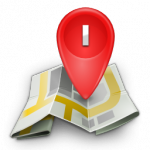 We live in a day when having a map is a very important thing, but technology has advanced so much that we can literally enjoy having the most detailed maps in front of our eyes, be it on the computer or laptop. If you have Linux installed on your computer already, then it can be a refreshing and very interesting thing to do. With the help of the GNOME desktop environment and the new concept of GNOME Maps, all those much-needed maps are closer to us than they have ever been.
We live in a day when having a map is a very important thing, but technology has advanced so much that we can literally enjoy having the most detailed maps in front of our eyes, be it on the computer or laptop. If you have Linux installed on your computer already, then it can be a refreshing and very interesting thing to do. With the help of the GNOME desktop environment and the new concept of GNOME Maps, all those much-needed maps are closer to us than they have ever been.
GNOME Maps is designed as a graphical front-end for the OpenStreetMap concept that has been created in JavaScript, so all those maps can be accessed from the browser like interface, which is a great and astounding achievement.
The concept of GNOME Maps has been integrated within GNOME 3.10 and since then it has been continually improved. The application on its own has been created as a free and open source tool, and it’s released under the GPL license version 2.
GNOME Maps is a simple JavaScript app that uses GJS as well as GObject Introspection. Moreover, the interface of GNOME Maps is created with the GTK Builder, and the tool also interfaces with a large set of APIs that are integrated within the OpenStreetMap project as well, with whom it interact in a great way.
Rendering in GNOME Maps is done with the help of the ClutterActor library that has been specifically designed to display maps. Moreover, GNOME Maps also provides geolocation, and in order to perform such a thing, GNOME Maps relies on the use of GeoClue that immediately offers information regarding the current position of the user.
In addition, GNOME Maps comes with a fairly generic set of navigational tools, which make it very easy to understand and operate. It also includes multiple simple tools that allow you to calculate the shortest route to the desired location or the current location. Since GNOME Maps is based on the OpenStreetMap, it’s crucial to know that all these maps are continually updated so this is the best possible map experience you can actually achieve, which is great.
There still isn’t the possibility to edit OSM data in GNOME Maps, at least for the time being, which makes GNOME Maps a great tool to access data, but not modify it in any way. This doesn’t mean that GNOME Maps is hard to use, on the contrary, you can gain complete access to all those necessary features and so much more rather easily.
You can however print maps in GNOME Maps, with the help of GTK Print feature. It’s a nifty little app that does manage to make it worthwhile right from the start, so you are bound to like it for sure.
As you can see, GNOME Maps is quite a new project but still one of the best and most interesting GNOME apps released in years. Although there is no OSM editing functionality yet, this will definitely be added in the future, showing us how unique and useful working with maps really is. If you need a good map application, then this is the one you were looking for!
Article sponsored by namecheap promo code Facebook Page
Popular Posts:
- None Found
